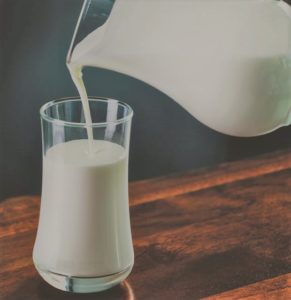Not a Drop to Drink: Forever Chemicals in Drinking Water Staggering
Water, water everywhere but not a drop to drink. The famous line from Samuel Coleridge’s poem “The Rime of the Ancient Mariner” echoes throughout the country following new findings from the Environmental Working Group (EWG). Recent laboratory tests have found that more Americans have been exposed to toxic forever chemicals in their drinking water than previously reported. The EPA previously estimated that 110 million Americans may be contaminated with forever chemicals.
Yet, according to the EWG, forever chemicals are likely detectable in all of the U.S.’s major water supplies. The tests, which were performed between May and December of 2019, found forever chemicals in 1,400 drinking water sites in 49 states. They also illuminated that various U.S. cities’ water supplies exceeded limits set by the EPA.
Brunswick County, North Carolina tested the highest with 185.9 parts per trillion (ppt). The EPA’s limit is 70 ppt.
So we know we have a problem on our hands. But what exactly are forever chemicals?
What are Forever Chemicals?
Forever chemicals are toxic fluorinated chemicals found in various products. From cookware to beauty products to fertilizer, forever chemicals are abundant in all corners of America. And once they’re here, they never leave.
Forever chemicals get their name because they don’t break down. Once they’re in the environment (or our bodies), they stay there. But the scariest thing about forever chemicals is their toxicity, as they can cause:
- Reproductive issues
- Cancer
- Weakened immunity
- Low birth rate
- Increased weight gain and cholesterol
- Endocrine disruption
These forever chemicals, or more scientifically, PFAS, were first introduced in the 1940s when DuPont came out with nonstick cookware coated in Teflon. In the early 2000s, traces of Teflon were found in drinking water, and scientists then linked it to cancer. 
So if we’ve known that forever chemicals are toxic, why would the EPA allow them? That’s a good question. The answer is, they only allow some.
The EPA’s Limits on PFAS
PFAS are long-chain chemicals consisting of eight carbon atoms. These chemicals were phased out when researchers found that they were toxic to human health. Yet, chemists found a way to make short-chain PFAS containing only six carbon atoms, claiming they were safer than their counterpart. With this information, the EPA and FDA allowed the short-chain chemicals to be used in products.
Only, short-chain chemicals aren’t safer than long-chain ones. According to recent research from Auburn University, short-chain chemicals may actually cause more damage than long-chain chemicals.
Unfortunately, there is no real limit for forever chemicals in drinking water. The EPA has set a non-enforceable health advisory level of 70 ppt, but states get to decide the limit they want to set for PFAS.
The FDA also allows PFAS in food packaging and other products–and studies have even found these chemicals in our food. But the FDA is not moving to fix this.
And this isn’t even the worst part.
Forever Chemicals in Fertilizers
Recently, biosolids have emerged as a solution to our waste problem.
In Massachusetts, the Boston Harbor Cleanup converted sewage into a byproduct that could be used to treat fields. Instead of dumping sewage into water bodies and polluting those resources, it was turned into fertilizer pellets, or biosolids. Residents were skeptical about using human waste on crop fields, but federal regulations that require these fertilizers be treated for heavy metals and pathogens eased their concerns.
Yet, the public didn’t know that these regulations do not require the treatment–or even the testing–of PFAS. They most likely didn’t even know about PFAS to begin with.
In March of 2019, the Massachusetts Water Resource Authority finally tested the fertilizer for PFAS. The biosolids were found to have 18,000 ppt of forever chemicals.
That’s 97 times more potent than the highest level of PFAS found in drinking water (185.9 ppt).
You might be thinking: okay, well, we don’t consume fertilizer. So what’s the big deal?
The big deal is, you actually kind of do.
How are we Consuming these Chemicals?
Fertilizer is what plants use as nutrients. When you eat a vegetable, you’re absorbing some of what that plant absorbed in the ground. Consuming crops fertilized with biosolids is one way you can be exposed to PFAS. Another way is by eating livestock that have consumed plants fertilized with biosolids.
Biosolids are also known to leach into ground water and waterways via runoff. So these biosolids will end up polluting your drinking water as well, adding to the problem of PFAS already found in drinking water. Another beverage we consume–milk–is also contaminated with PFAS. In Maine, tests on a dairy farm that used biosolids found that the cows’ milk contained 1,420 ppt of forever chemicals. 
Fertilizer isn’t the only source of forever chemicals. They’re found in non-stick cookware, food wrappers, stain-resistant products, water-repellent clothing, and cosmetics.
So if they’re everywhere, how can we avoid them? What is the government doing? What should you do?
Let’s talk about that.
Some Progress is Being Made
In the summer of 2019, Congress passed versions of an annual defense spending bill, which would:
- Limit PFAS discharge in drinking water.
- Order the military to stop using PFAS in food packaging and firefighting foam.
- Increase reporting of PFAS discharges.
- Require polluters and the DoD to clean up pollution.
While a great bill, it might never come to light. It is still under negotiation, and President Trump does not support it. In fact, he’s threatened to veto it.
Trump has also repealed an Obama-era rule, rolling back federal limits on pollution of wetlands and smaller waterways. The revised rule identifies which bodies of water are and are not protected under the Clean Water Act. Previously, all bodies of water were protected.
According to the EPA Science Advisory Board, this rule “decreases protection for our Nation’s waters and does not support the objective of restoring and maintaining ‘the chemical, physical and biological integrity’ of these waters.” Trump claims that this revised rule will give farmers the rights to their land back, letting them (and the state) decide how to manage their water resources. Ephemeral water ways that are not protected under this new rule are important to larger waterways, though, and their pollution will inevitably lead to the pollution of larger waterways.
So while some are fighting for cleaner water, others are doing quite the opposite.
Even if we can’t get our legislators’ help, there is still something we, as individuals, can do to protect ourselves. Check out the EWG’s guide on Avoiding PFAS Chemicals for more information.
And if you want to reduce your exposure to forever chemicals from crops and livestock, you can:
- Buy organic food (biosolids cannot be used on organic fields) and
- Support ecofriendly and safe fertilizers, like xVital.
Sources:











